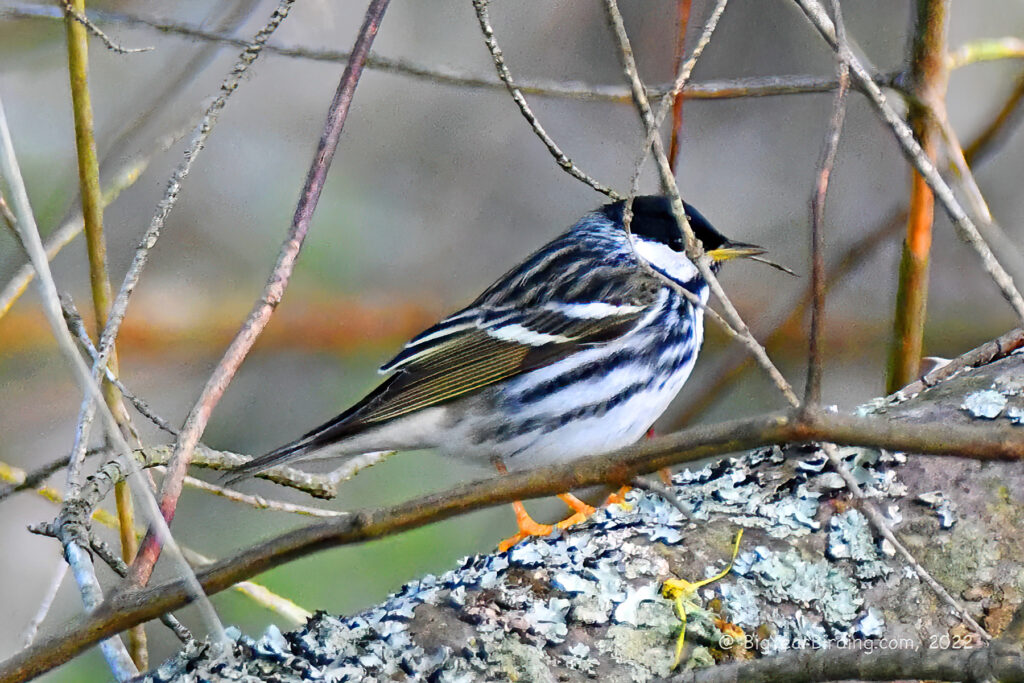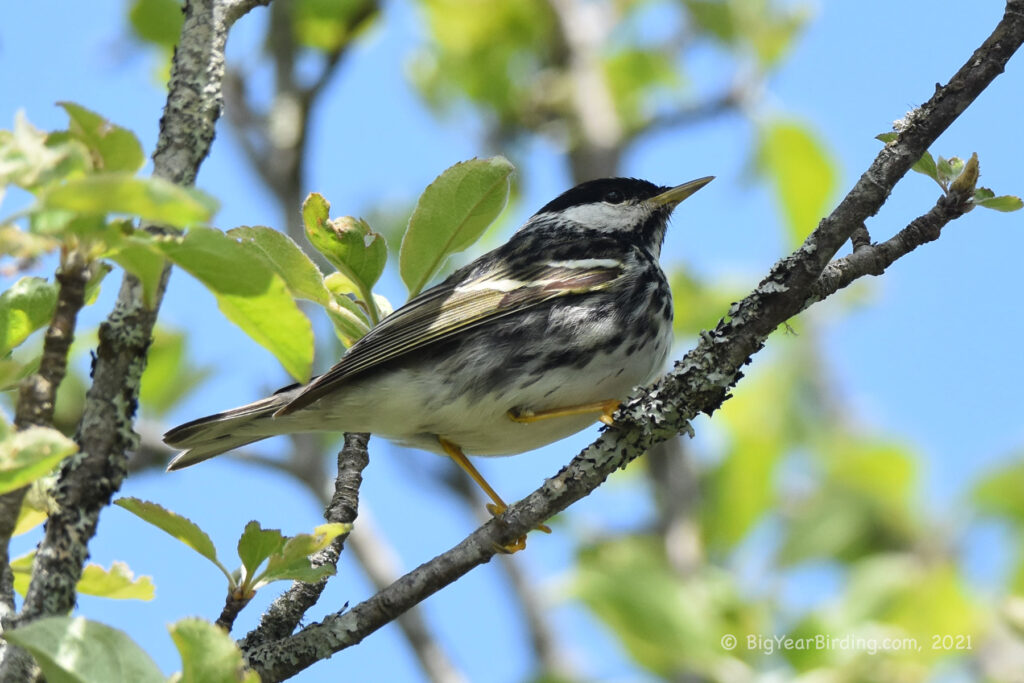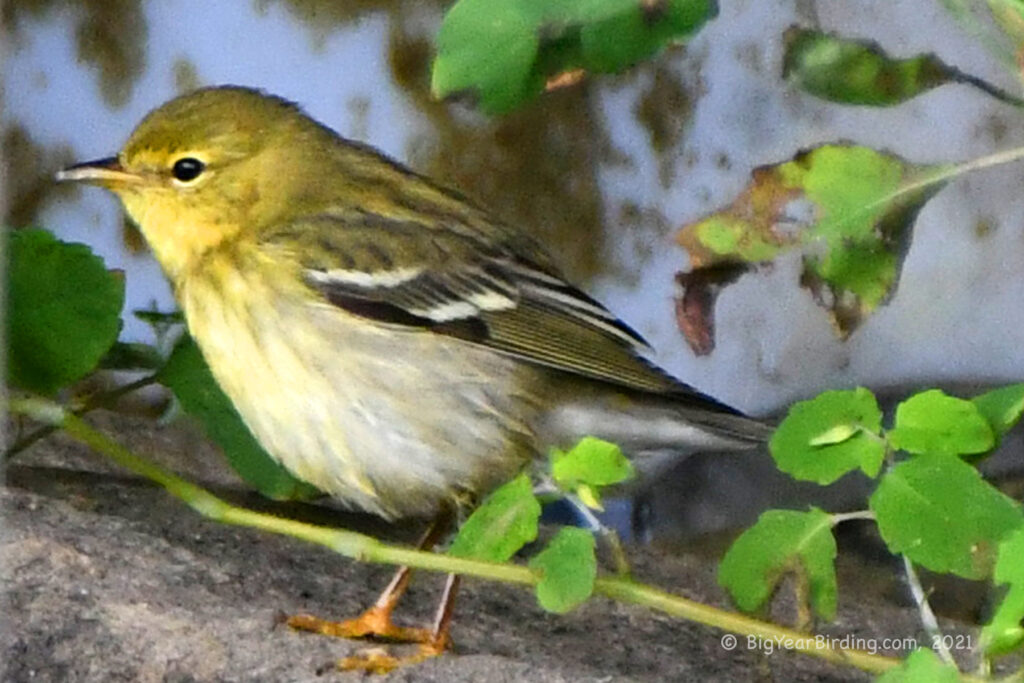
The Blackpoll Warbler (Setophaga striata) is a small songbird with a length of about 5.5 inches and a weight of approximately 0.4 ounces. Its most distinguishing field mark is its black and white striped head, which is more prominent in males during breeding season. The rest of the bird’s plumage is olive-yellow, with white underparts.

One of the most remarkable aspects of the Blackpoll Warbler’s behavior is its incredible migratory journey. During the fall migration, the species flies non-stop for up to 88 hours over the Atlantic Ocean, covering a distance of up to 1,800 miles. This is the longest non-stop flight of any passerine bird. The Blackpoll Warbler breeds in the boreal forests of Canada and Alaska, and winters in northern South America.
During the breeding season, the Blackpoll Warbler can be found in the spruce-fir forests of Canada and Alaska. The species’ preferred habitat is often characterized by stunted and stunted tree growth, with a dense understory of shrubs and other vegetation. During migration, the Blackpoll Warbler can be seen in a variety of habitats, including deciduous and coniferous forests, and occasionally in urban parks and gardens.
The Blackpoll Warbler is primarily an insectivore, feeding on a variety of insects, spiders, and other arthropods. During migration, the species will also feed on berries and other fruits. The Blackpoll Warbler’s foraging behavior typically involves hopping through the vegetation and gleaning insects from the foliage.

The Blackpoll Warbler is a relatively common and widespread species, with a population estimated at 110 million individuals. However, the species is still vulnerable to habitat loss and degradation, particularly in its breeding range.

